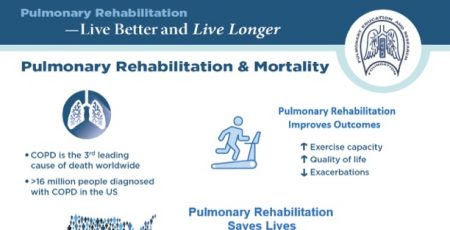07 Dec Pursed Lips Breathing For People With Pulmonary Fibrosis [VIDEO]
By Brian L. Tiep, MD
Pursed lips breathing has been shown to relieve shortness of breath and increase oxygen saturation in people with COPD. It was originally discovered by the patients themselves, who experienced that exhaling through pursed lips made them feel better. Researchers determined that the back pressure created by exhaling through pursed lips slowed exhalation and enabled patients to exhale more fully. A more complete exhalation allows more room to inhale the next breath. I learned from my studies using lung models that inhaling through the nose and exhaling through the mouth could eliminate more CO2 with each breath. Mary Burns and I did two studies – the first showed patients with COPD could increase their oxygen saturation by pursed lips breathing while viewing their oximeter – a kind of biofeedback technique. This technique is commonly taught in pulmonary rehabilitation programs. The second study showed that patients with restrictive diseases such as pulmonary fibrosis also were able to increase their oxygen level. I am teaching this technique to patients with pulmonary fibrosis, lung cancer, and other respiratory challenges.
Actually, the benefits of pursed lips breathing are dependent on how the technique is taught. In our clinic, patients are taught to inhale through their nose and exhale slowly through pursed lips. There are a number of variations in how it is taught, however we focus on improving your ability to efficiently eliminate more CO2 on each breath – without working too hard at it. Since the rate of breathing is controlled by the CO2 sensor in your brain, this more efficient breathing technique enables patients to comfortably breathe more slowly to prevent, relieve, or delay the onset of shortness of breath, and be active for longer periods of time.
Summary Recommendations for Pursed Lips Breathing:
- There is no one right way for everyone to breathe
- Pursed lips breathing is a strategy to relieve or prevent shortness of breath, particularly during exertion
- Method: Inhale slowly through your nose; then exhale more slowly through pursed lips; Do NOT breathe too hard or too deeply. Rather “Smell the roses during inhalation. Then blow the candle just causing it to flicker during exhalation.”
- Practice pursed lips breathing while you are at rest. Use the technique when you become active – before you are so out of breath that you are gasping for air.
Good Breathing! It takes practice but it is worth it.
Here’s a 13-minute video about oximetry, which includes pursed lips breathing:





Heidi McCray
Posted at 14:37h, 07 DecemberI definitely find PLB a tremendous tool! I have COPD and Lupus that affect my lungs. I discovered this tool on… My COPDteam.com a few months ago. June 2017 I had such a bad SOB I actually blew out my air capacity. I had to call an ambulance where they had to give me 120 liter of oxygen plus treatments of albuterol. What kept me going while I waited for them to arrive was doing PLB slowly and focusing on each exhalation helped calm me down which brought my heart rate down also. Wonderful article I look forward to all notices you send to my email. Thank you for all you do to help us be informed as to how to take care of ourselves.
PERF
Posted at 12:50h, 21 DecemberYou are most welcome, Heidi – and congratulations on your quick thinking and use of pursed lips breathing during your shortness of breath flare-up.